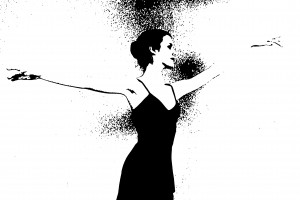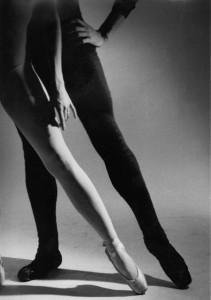We are pleased to have Marika Baxter, PT, as our guest contributor this month. Marika has extensive experience working with dancers, and her article on the “Phases of Healing” is great information to share regarding what happens in your body when you have an injury, and how to integrate that with returning to happy, healthy dancing.
After Marika’s article, you’ll find a few additional words from me, on something we’ve mentioned before in our Wellness column, but which bear mentioning again — keeping the rest of your body in shape while you’re recovering from an injury.
The Holidays are here, so enjoy — happy “Nutcracker”, if that’s a part of your dance life, and “talk” to you again soon!
Jan
Jan Dunn, MS
___________________________________________________________________
Phases of Healing
by Marika Baxter, PT, MSPT, OCS
 If you’ve ever had an injury that’s sidelined you from dancing, the most pressing question you may have is “How long will it take to recover and when will I be dancing again?” Though every injury and dancer is different, the way our body heals does follow the same pattern. Understanding the phases of healing and how they relate to getting back in the studio can help you in the journey back to health. The important thing to remember is that healing is a process, not an event!
If you’ve ever had an injury that’s sidelined you from dancing, the most pressing question you may have is “How long will it take to recover and when will I be dancing again?” Though every injury and dancer is different, the way our body heals does follow the same pattern. Understanding the phases of healing and how they relate to getting back in the studio can help you in the journey back to health. The important thing to remember is that healing is a process, not an event!
Phase I – The Inflammatory Phase
The first phase of healing is called the inflammatory phase. You’re in the studio rehearsing for a performance and as you step into a turn your concentration lapses and your ankle rolls. You feel pain on the outside of your ankle and when you try to continue dancing your ankle feels weak and is too painful to put weight on. Luckily you put ice on it right away but by the end of the night your ankle is swollen and bruised.
Whether the injury is major, like this story of an ankle sprain, or just a small cut or bruise, the first thing the body will experience is inflammation. You can think of the inflammatory phase as the clean up phase. In the first 24-48 hours, the body will send cells to the area to help remove injured tissue. The body will also begin laying down new cells to form a blood clot, almost like an internal scab. This helps keep the injury protected as it begins to heal.
During the inflammatory phase, there are a number of things you may be feeling. It’s common to have pain, swelling and possibly warmth and redness in the area. Depending on the severity of the injury, you may have difficulty dancing, walking or moving the body part. In this first phase of healing, you may need to modify what you’re doing in class or rehearsals to allow for healing to begin. In some cases you may need to take a break from dancing so the body can start the healing process.
In these first few days after an injury, the best thing to do is PRICED: Protect, Rest, Ice, Compress, Elevate, Diagnose. You can see the previous dance wellness article on 4dancers.org entitled “Keeping Dancers Dancing: “Help I Have An Injury – What Do I Do?” for more information on PRICED.
Phase II – The Repair Phase
The second phase of healing, the repair phase, is exactly that. Scar tissue begins to form to knit the injured tissue back together. New blood vessels are formed to continue bringing cells to the area that promote the healing process. This phase can begin around the 3rd or 4th day and can last up to six weeks. During this time you should start to feel your pain and swelling decrease, and your movement will begin to return to normal.
What’s important to know about the repair phase is that the new tissue that’s being laid down is very fragile. You can be more vulnerable to re-injury if you rush your return to dancing while you’re at this point in the healing process.
The good news is that during this phase you get to start dancing! Just like the tortoise, slow and steady wins the race here. Typically, you’ll want to begin by doing smaller, low impact movements that you’re familiar with. For example, if you’re getting back into the ballet studio after an ankle sprain, you may start with barre in flat shoes, and only two legged plie and releve. It’s hard to have patience as you heal, but a good thing to do during this phase is focus on your technique and body placement, which won’t put extra stress on the healing tissue. You can also use various cross training techniques during this period to keep the rest of your body in shape. Check out the series of articles called “Keeping Dancers Dancing: Outside Conditioning” for ideas on cross training.
 Phase III – The Remodeling Phase
Phase III – The Remodeling Phase
The last phase of healing is the remodeling phase. This phase can begin around the 3rd week and can last for up to a year. During this time, the new tissue that is being formed becomes stronger so it can withstand the stresses of more dynamic activity.
By this time, you should have full and pain free range of motion. Your strength may also have returned to normal but you may notice your endurance is not what it used to be. While you may be able to do all the movements in one class, your endurance may not be enough to do multiple classes in one day, or rehearsals on top of your class load. Returning to your full schedule of classes should follow the same gradual method.
The Broken Record Cycle
Unofficially, the fourth phase of healing can be called the broken record phase. This happens when you return to dancing too soon, or add in movement that your body isn’t ready for. For example, you’ve gone back into class and have only gotten through barre in flat shoes. One day you’re feeling so good you decide to try some center work with pirouettes and jumps. You may notice that by the time you go to sleep your ankle is swollen and painful again.
It’s always best to try and avoid the broken record cycle. By stressing the healing tissues too much you can cause the injury to take a step backwards which prolongs your healing and your time away from dancing.
If you’re seeing a physical therapist or another medical professional, work with them on what things you can be doing in class and come up with a plan on how you’ll progress. It’s also good to talk with your teachers who can help you decide what is safe for you to be doing in class.
Now that you know about how an injury heals, hopefully you can use this information to encourage a safe a speedy recovery!
______________________________________________________________________________
Marika’s excellent article reminded me again of an important thing to remember when you have an injury / are in the rehab and recovery stage — and that is, not to stop all activity when you have an injury! A young dancing relative of mine recently had a foot injury, was taken out of “Nutcracker”, and told not to dance at all until January. The intentions behind that advice were good, but the reality is different:
It’s never a good idea to stop all physical activity when you are recovering from an injury. The body “de-conditions” quickly –i.e., you lose strength and flexibility in other areas when you stop everything……which then puts you at a higher risk for injuring other areas of your body when you return to dance, even though the injured part may be getting good rehab. There are so many things a dancer can do to stay in shape with the rest of the body:
1-taking a “rehab” class. Yes, some studios and teachers now offer such a thing —a class specifically for injured dancers in the company or school, usually taught by a dance medicine-familiar instructor or even a dance physical therapist (and many of the PT’s who work with dancers are or were dancers themselves!).
If you are a dancer or instructor who is reading this, and are interested in starting such a class at your studio, please feel free to contact me for more information !
2-doing outside-of-dance physical activities such as Pilates, etc. —i.e., the “conditioning” forms we’ve talked about. As long as you are not using the injured body part, and are under the guidance of a knowledgeable instructor, this is a great way to keep in shape while not dancing.
Another important aspect of keeping the body going is the emotional part —it’s very hard for dancers to not be moving at all, and just sitting and watching class (which is sometimes recommended) can be very hard. It can be useful to help develop your “eye” –i.e, watching and analyzing dance –but to do it more than a few times, and not be doing anything at all yourself, can be pretty tough emotionally.
3-Floor Barre. If you know this form of conditioning, it’s an excellent one for a dancer in a rehab situation. It was specifically developed for injured dancers to be able to keep in shape while non-weight bearing. We’ll have more on it in a future article.
So —if you’re injured and can’t dance full-out, see what else you (or your teachers) can come up to keep you in shape.
– Jan
_______________________________________________________________________
BIO: Marika Baxter PT, MSPT, OCS has worked in performing arts medicine since 2003 beginning her career at Westside Dance Physical Therapy in New York, NY. During her time at Westside Dance, she had the opportunity to be mentored by the exceptional staff in advanced manual therapy, motor control techniques and dance medicine. Here, she was part of the team of physical therapists who cared for the dancers of The New York City Ballet and The School of American Ballet. While at Westside Dance, Marika developed and led adolescent wellness workshops across the country, and co-authored an article in the Journal of Dance Medicine & Science entitled Acetabular Labral Tears in the Dancer: A Literature Review.
From 2008-2012, Marika served as the Director of Performing Arts Medicine at The Ohio State University. Together with the Performing Arts Medicine team, she helped care for the dancers of BalletMet, BalletMet Academy, OSU Department of Dance, and other local dance studio’s and touring shows. She served on the Medicine & the Arts Roundtable and Board at The OSU Wexner Medical Center and was an OhioDance board member.
Currently, Marika works at Magna Physical Therapy and Dance Medicine Center in Orange, CT. She serves on the board of the Connecticut Dance Alliance locally and on the IADMS Education Committee. She is also a peer reviewer for the IADMS Annual Meeting. She is a member of the APTA and the Performing Arts Special Interest Group.





Perfect timing. I’m injured as of 2 days ago and I’ve been here before, but it can be a lonely frustratiing time period. Great reminder to be patient, modify and keep moving. Thanks
So sorry to hear it. I hope you heal up quickly! 🙂 Thanks for the comment.